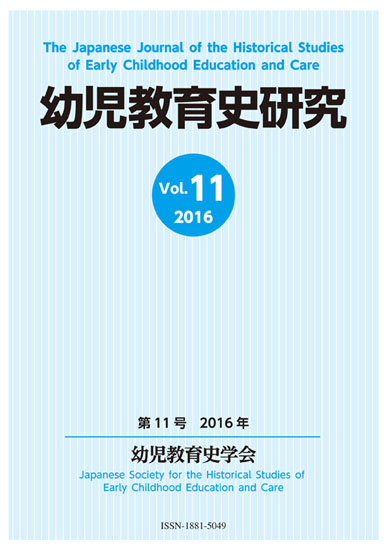Volume 11
Displaying 1-18 of 18 articles from this issue
- |<
- <
- 1
- >
- >|
-
2016 Volume 11 Pages Cover1-
Published: 2016
Released on J-STAGE: July 27, 2020
Download PDF (25K) -
2016 Volume 11 Pages Cover3-
Published: 2016
Released on J-STAGE: July 27, 2020
Download PDF (58K)
-
2016 Volume 11 Pages 1-15
Published: 2016
Released on J-STAGE: March 29, 2017
Download PDF (402K) -
2016 Volume 11 Pages 16-31
Published: 2016
Released on J-STAGE: March 29, 2017
Download PDF (444K)
-
2016 Volume 11 Pages 32-
Published: 2016
Released on J-STAGE: March 29, 2017
Download PDF (89K) -
2016 Volume 11 Pages 33-37
Published: 2016
Released on J-STAGE: March 29, 2017
Download PDF (291K) -
2016 Volume 11 Pages 38-53
Published: 2016
Released on J-STAGE: March 29, 2017
Download PDF (500K) -
2016 Volume 11 Pages 54-62
Published: 2016
Released on J-STAGE: March 29, 2017
Download PDF (466K)
-
2016 Volume 11 Pages 63-66
Published: 2016
Released on J-STAGE: March 29, 2017
Download PDF (206K) -
2016 Volume 11 Pages 67-70
Published: 2016
Released on J-STAGE: March 29, 2017
Download PDF (216K) -
2016 Volume 11 Pages 71-74
Published: 2016
Released on J-STAGE: March 29, 2017
Download PDF (221K) -
2016 Volume 11 Pages 75-78
Published: 2016
Released on J-STAGE: March 29, 2017
Download PDF (210K) -
2016 Volume 11 Pages 79-83
Published: 2016
Released on J-STAGE: March 29, 2017
Download PDF (280K)
Regulations
-
2016 Volume 11 Pages 84-85
Published: 2016
Released on J-STAGE: July 27, 2020
Download PDF (673K) -
2016 Volume 11 Pages 86-87
Published: 2016
Released on J-STAGE: July 27, 2020
Download PDF (675K)
Editor's Notes, Editorial Board for the Journal, Colophon
-
2016 Volume 11 Pages 88-
Published: 2016
Released on J-STAGE: July 27, 2020
Download PDF (675K) -
2016 Volume 11 Pages App1-
Published: 2016
Released on J-STAGE: July 27, 2020
Download PDF (728K)
-
2016 Volume 11 Pages Cover2-
Published: 2016
Released on J-STAGE: July 27, 2020
Download PDF (50K)
- |<
- <
- 1
- >
- >|
